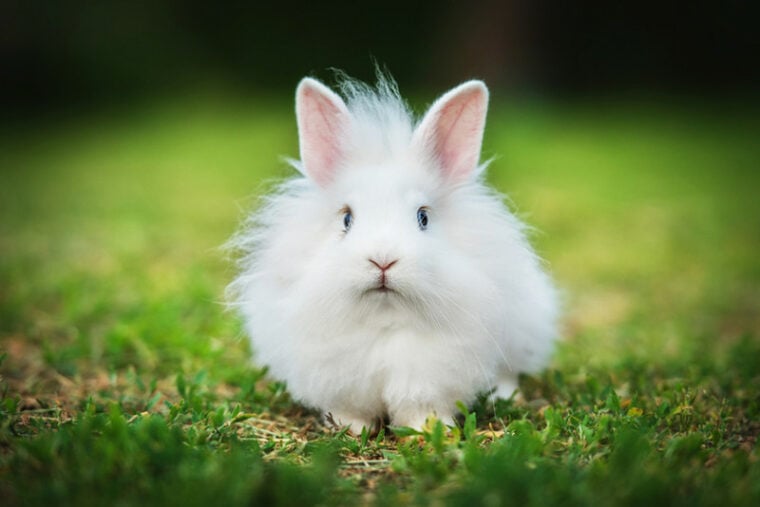
Our society has long associated rabbits with being the perfect pets for children, but this depends on many factors. In fact, rabbits are not considered to be great pets for young children, and not every breed will make the right kind of pet.
That said, some rabbit breeds do make suitable pets for children, as long as the latter have been taught how to properly care for them. Here are 12 breeds that make ideal pets for kids.
The 10 Best Rabbit Breeds for Kids
1. Californian Rabbit
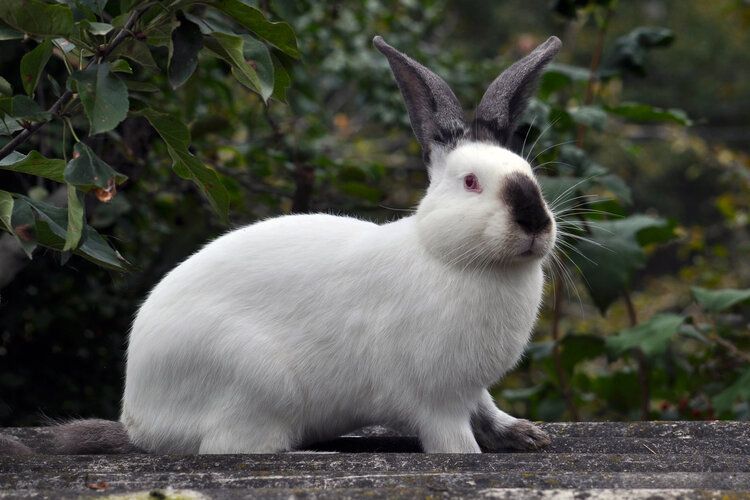
| Country of Origin | U.S.A. |
| Weight | 8–10 pounds |
| Lifespan | 5–10 years |
Californian Rabbits are large rabbits and have an eye-catching fur color and red eyes. They have short, soft fur that is predominantly white but with either dark brown or black coloring (also called points) on their nose, ears, feet, and tails.
They are calm and gentle rabbits and are typically easy to pick up and hold as long as they are handled properly. They are also friendly and affectionate and make great pets for the family.
2. Chinchilla Rabbit

| Country of Origin | France |
| Weight | 9–12 pounds |
| Lifespan | 5–8 years |
The Chinchilla rabbit is also called the American Chinchilla, but they originated in France. They have a thick coat that is soft and silky and has similar coloring to the chinchilla (hence their name).
The coat is a combination of dark blues and grays and is easy to maintain. The Chinchilla rabbit is a gentle breed that is calm and friendly.
3. Dutch Rabbit
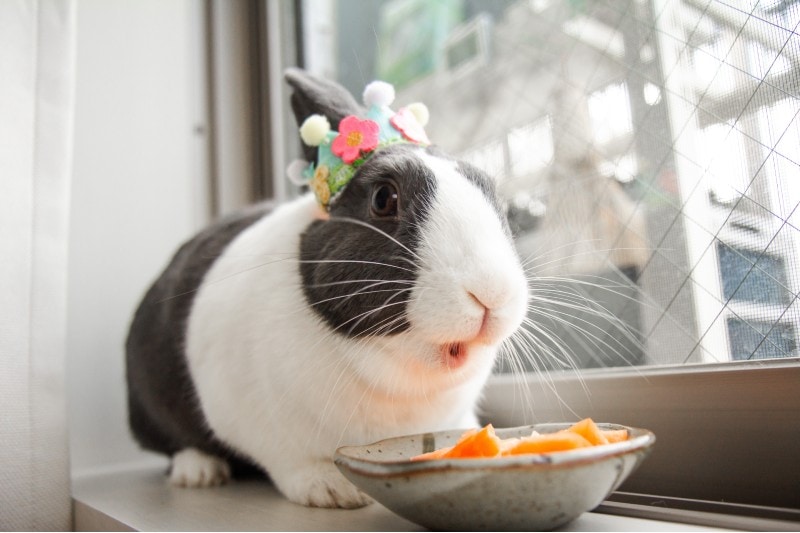
| Country of Origin | England |
| Weight | No more than 5.5 pounds |
| Lifespan | 6–15 years |
The Dutch rabbit is a small breed with short, straight ears and super soft fur. Their eye-catching coat is white on the front half of their body and black on the back half. Their eyes and ears are darker, and while the main color is commonly black, it can also be gray, chocolate, or blue.
Dutch rabbits are friendly, easy-going, and calm, and with the right handling and socialization, they make wonderful pets for children. That said, due to their small size, they do best with older children.
4. Florida White Rabbit
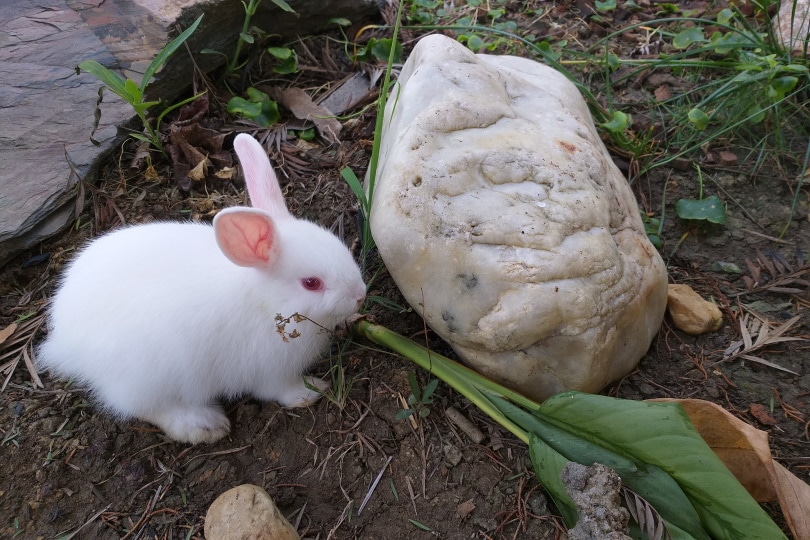
| Country of Origin | U.S.A. |
| Weight | 5–7 pounds |
| Lifespan | 8+ years |
The Florida White is a well-known breed for their pure white coat and red eyes, as they are technically albino. They are small to medium in size with short, soft coats.
They are sweet and docile rabbits that are calm and quiet and can make wonderful pets for people of all ages.
5. French Lop Rabbit

| Country of Origin | France |
| Weight | 10–15 pounds |
| Lifespan | 5–7 years |
The French Lop is a large rabbit with ears that droop down (which describes the ears of any breed with “Lop” in the name). French Lops come in various colors, including black, chinchilla, fawn, chocolate, red, white, and blue.
These are cuddly, affectionate rabbits and thrive on their human’s attention. They enjoy being picked up and are docile and calm.
6. Harlequin Rabbit
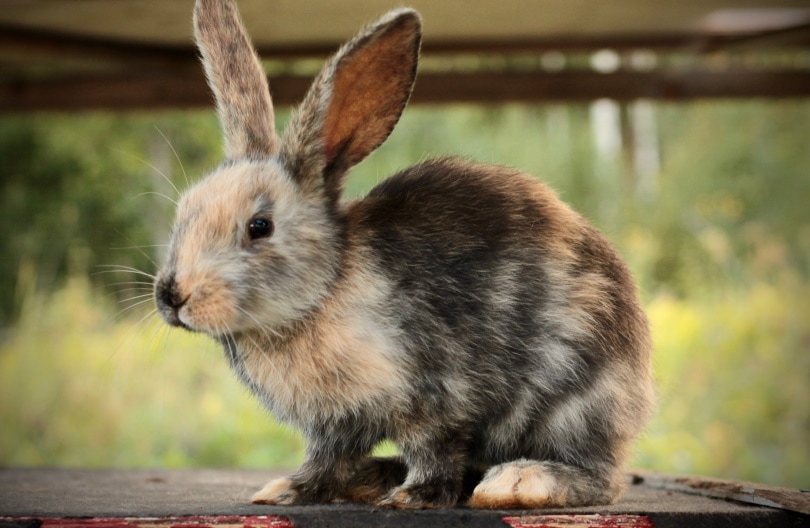
| Country of Origin | France |
| Weight | 6.5–9.5 pounds |
| Lifespan | 5–8 years |
Harlequin rabbits are medium-sized rabbits with striking coats! No two Harlequins look the same due to the wide variety of patterns with a combination of two to three colors.
It should be noted that there are two different types of Harlequins depending on the color: Japanese Harlequins have orange bellies and Magpies have white bellies. Harlequins are easygoing and smart rabbits that can be playful, friendly, and docile.
7. Havana Rabbit

| Country of Origin | Netherlands |
| Weight | 4.5–6.5 pounds |
| Lifespan | 5–8 years |
Havana rabbits are small to medium in size and are commonly a rich chocolate brown, but they can also be black, blue, or broken. They have compact bodies with short, soft fur. The Havana is a sweet, affectionate rabbit that can be calm but also playful.
8. Satin Rabbit
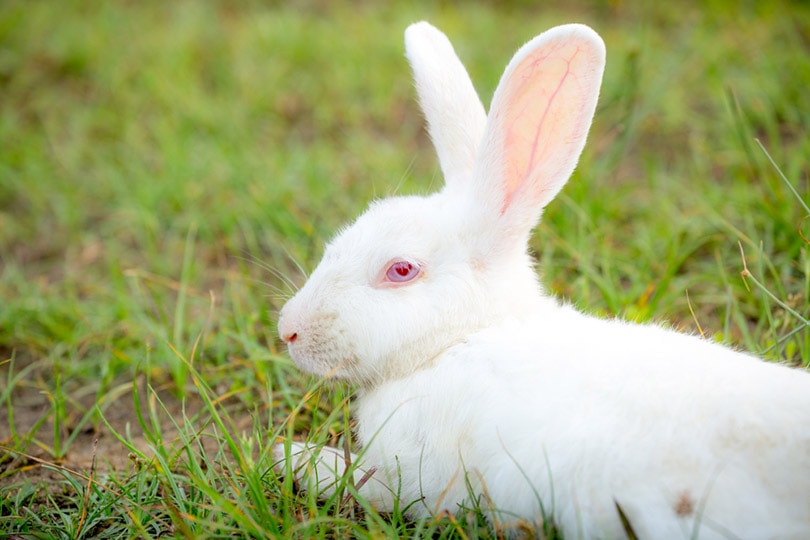
| Country of Origin | U.S.A. |
| Weight | Up to 11 pounds |
| Lifespan | 5–8 years |
The Satin rabbit has satin-like fur, so it’s obvious how they got their name. Their fur is silky, has a lovely and unique sheen, and comes in a variety of different colors, and the coat overall is fairly low maintenance.
Satin rabbits are medium in size and are docile and calm, and as long as they are well-socialized, they don’t mind being picked up.
9. Sussex Rabbit

| Country of Origin | England |
| Weight | 7 pounds |
| Lifespan | 6–8 years |
Sussex rabbits have short, dense fur and are either golden or cream in color. They are roughly medium in size and are relatively low maintenance.
The Sussex rabbit is quite affectionate and docile and can even be cuddly. They’re one of the best breeds for children, as they tend to be playful and curious but are primarily calm and laidback.
10. Thrianta Rabbit
| Country of Origin | Netherlands |
| Weight | 4–6 pounds |
| Lifespan | 5–10 years |
Thrianta rabbits are medium in size but aren’t known to be quite as fragile as some other breeds, so they are easier for children to handle. They have short, dense fur that is a vibrant deep red color.
Thriantas are sweet, gentle, and quiet rabbits that enjoy playing and cuddling. They are tricker to litter train than many other breeds, but it is still quite doable with patience and treats.
What to Look For in a Rabbit for Children
Several factors come into play when you are considering bringing a rabbit into your home, particularly one with children.
Temperament
Most rabbits tend to be docile and gentle, but some breeds might not have the right temperament as children’s pets. You’ll want to look for rabbits that aren’t skittish and fearful, as a scared rabbit can accidentally hurt themselves or a child. They should also be playful and outgoing, since they will be spending time interacting with kids.
Size
The rabbit must be the right size, depending on the child’s age. Small rabbits can be fragile, nervous, and skittish. But the rabbit also can’t be too large for the child to carry safely, and large rabbits have the potential to cause injury when they kick.
Your best bet is a medium-sized rabbit, roughly 4 to 9 pounds when fully grown. You’ll need to do your research if you plan on starting with a baby rabbit, so you know what weight they will be as an adult.
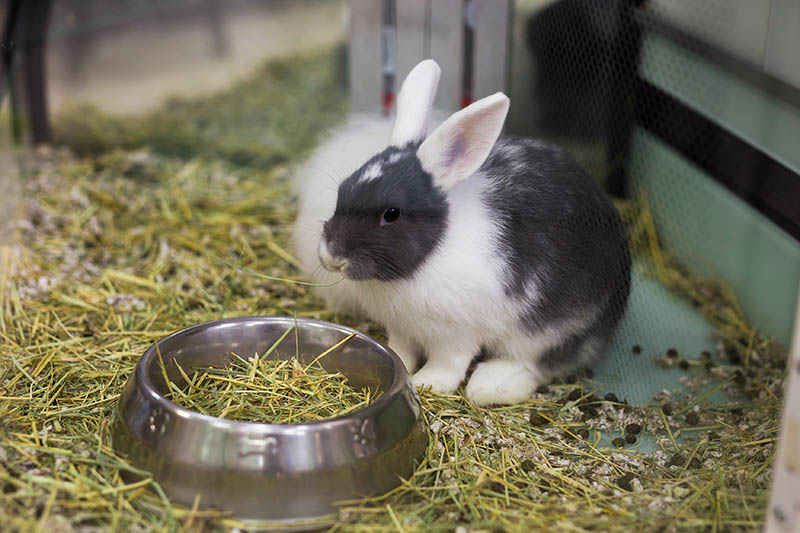
Grooming
You’ll want to avoid long-haired rabbits, no matter how cute they are. Long hair means more maintenance, as they’ll need daily brushing. This is a big commitment that might be too much for some children.
Lifespan
Losing a pet is heartbreaking for anybody, but especially children. That said, rabbits have longer lifespans than other small pets, such as guinea pigs and hamsters. Some breeds live longer than others, so consider the lifespan of the rabbit that you’re interested in.
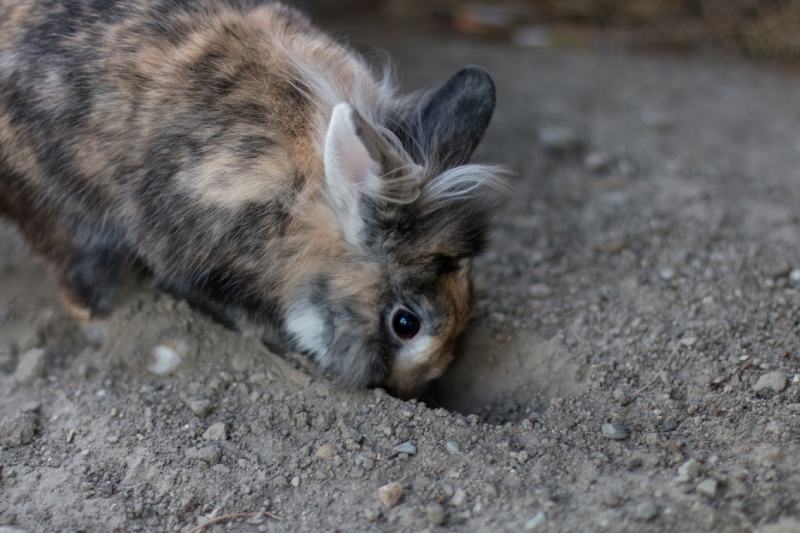
How Do You Know If Your Child Is Ready for a Rabbit?
Rabbits won’t always be good pets for some homes. They have specific needs and can be injured quite easily, so you’ll need to research what goes into the care of a rabbit.
Children older than 7 can typically care for rabbits, especially if they can be gentle and calm and are willing to take on the responsibility. Rabbits are prone to fracturing their lower spine if not handled correctly, which can lead to the need for euthanasia.
A super rambunctious child isn’t the best fit for rabbit ownership. Rabbits are prey animals, which makes them quite skittish. Erratic behavior and noise can be quite terrifying to a rabbit. You should also be prepared to become the rabbit’s primary caregiver if things don’t work out with your child.
Final Thoughts
You’ll need to sit down with your child and have a serious conversation about the responsibilities that go into caring for a rabbit. They are not low-maintenance pets, and some breeds aren’t that cuddly, so you might need to consider a different kind of animal if your child is energetic and wants something to cuddle. Most rabbits prefer not to be picked up.
But if you and your child have done the research and you believe that they can take on the responsibility (and you’re prepared to step in if they can’t keep up with the commitment), maybe one of these breeds will make the perfect pet!
Featured Image Credit: Rita_Kochmarjova, Shutterstock









